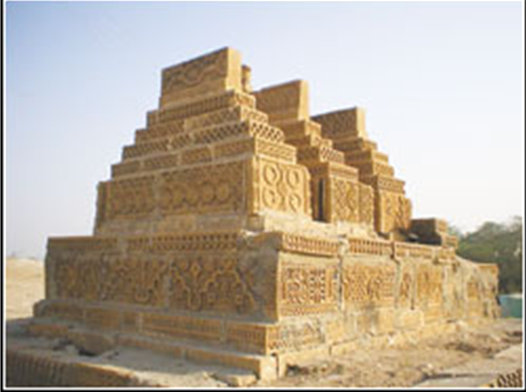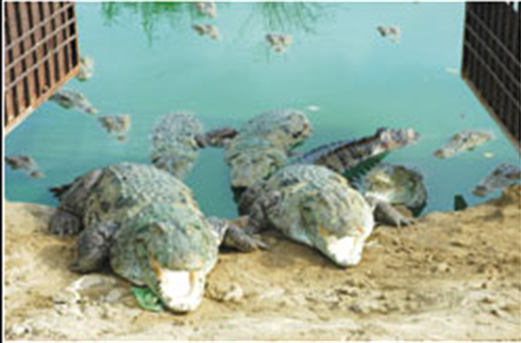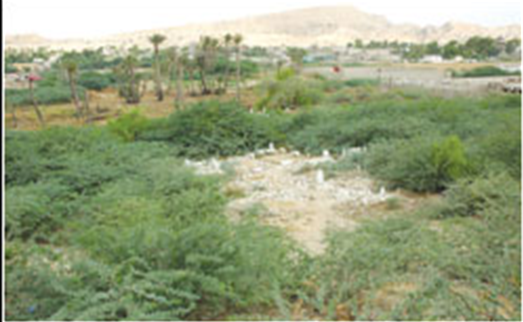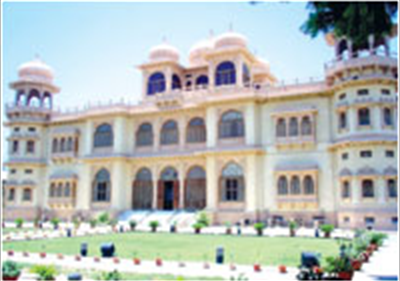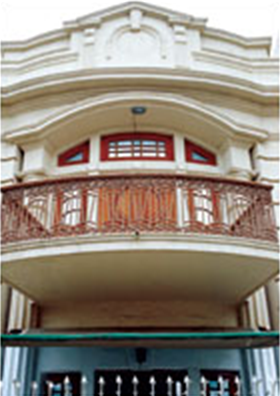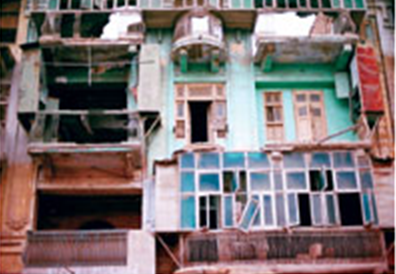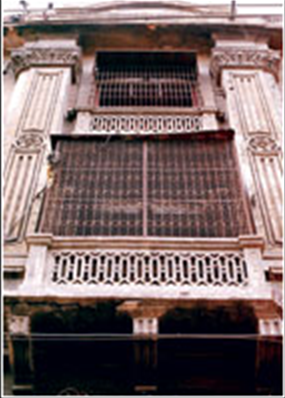Karachi: L-Q
This is a collection of articles archived for the excellence of their content. Readers will be able to edit existing articles and post new articles directly |
Contents |
Karachi vs. Lahore
A tale of two cities
By Zainab Mahmood
Each city has its own delights. Karachi has the sea, Lahore its food street. Karachi has its enormous variety of imported quality goods, while Lahore has its authentic and historical markets.
I must confess that during the countless winter breaks spent in Lahore in my younger days I found the city and its people to be drastically different from the life I had been used to in Karachi. It made it easier on my conscience to think of my cousins as “paindu” when they referred to me as a Karachiite “burger”, all in good fun, of course.
It is certainly true that people from these two cities, as is true of any other similar yet distinct city cultures, have formed pre-conceived notions and prejudices about each other. Now over the years these were possibly reinforced by economical and cultural factors such as Lahore being the hub of education, intellect, art and literature while Karachi was more of a financial district with the hustle and bustle of a fast-paced city life driven by material pursuits. But it’s not so black and white -- Karachi isn’t as shallow as it seems, nor is Lahore as sophisticated as it once was.
Ever since I went to Lahore earlier this year, I have been imbibing reservoirs of information on the differences between the two cities. I’ll start with the simpler stuff I noticed in my early days as my husband and I began to socialise with his circle of friends.
With the ubiquitous mushrooming of cafes across both cities I found that Lahore’s coffee spots outnumber those in Karachi. Having said that not all of them are worth writing home about and we quickly narrowed down our frequent haunts to a select few. The variety of food available at these cafes has some subtle differences from the menu choices in Karachi, where one is likely to find more elaborate and pretentiously embellished dishes to satisfy the cosmopolitan palettes. Lahoris, who are famous for loving their food, don’t quite believe in complicating matters with imported cheeses or vegetables or dressing them up with sauces -- they generally prefer good food in simple forms. Karachiites, on the other hand, need it to sound and look like it came off the BBC food screen and enjoy the added paraphernalia, the exotic salads and vegetables, which Lahoris would consider a tragic waste of space.
In Karachi one is likely to see the same faces at the same places as groups of friends prefer to make a particular place their haunt. Lahoris rarely ever think of going to the same place too often as the entire population of cafes is at their disposal and trying out different types of foods, snacks or desserts is more important than anything else.
Another remarkable feature of the café culture in Lahore is the presence of families and people of varying economic backgrounds, whereas in Karachi it is usually the citizens of Defence/Clifton, the so-called upper class that come in to spend their not-so-hard-earned money.
Stepping aside from the social factors, Lahore traffic shines a great deal of light on the mentality of drivers in the city. No adherence to rules, flagrant violation of the common sense and civic laws. Apparently vehicles in Lahore don’t come equipped with indicators, therefore one cannot blame the people for not using them nor understanding what the flashing light at the back of my car means. With traffic being as bad as it is one must say the layout of most of the city is easier to comprehend and navigate than Karachi. Having lived there for 28 years I still feel lost in some parts of Karachi and find it hard to explain directions to people because I just seem to know most of the ways by sheer frequency of visits and no logical route can be laid out for strangers driving in Karachi for the first time. Lahore on the other hand is more welcoming for a newcomer with its bigger roads and signs and sensible division of sectors and towns.
Being a thoroughbred Karachiite, who grew up arguing and interacting with Pathan “dokandaars”, I find the vendors and shopkeepers in Lahore dramatically different. At times surprisingly rude, at other times placidly accommodating, I still haven’t figured out if it is to do with the location of shopping areas in Lahore or with the creed of the shopkeepers. Are the Lahori ones better than those from other parts of Punjab or are the ones in Gulberg ruder than the ones in Defence?
Lahoris, of course, have a somewhat crude but highly entertaining and witty sense of humour, while Karachiites are more inclined to appreciate a more westernised, media-inspired humour or street and Indianised humour, depending on which part of the city you hail from. The upper class in both cities seem to religiously follow their favourite American dramas and comedy series; but people in Karachi have also developed a flavour for world cinema and cult movies which might be a hot favourite amongst a few Lahoris but doesn’t quite appeal to the general movie-watching youth there.
Lahore might also be known as more fashionable but Karachi is at pace with the world when it comes to seasonal trends. In the past people felt Karachi trailed Lahori fashion or that people in Lahore had a richer fashion sense; but now Karachi has devised its own taste and trends which is a healthy mix of local and foreign concepts catering to the tastes of the local market.
Each city has its own delights. Karachi has the sea, but Lahore has its food street. Karachi has its enormous variety of imported quality goods, while Lahore has its authentic and historical markets such as “ichra” and “anarkali bazaar”. Lahore has smoother roads and running water, while Karachi struggles with its civic problems and yet manages to stay afloat and abuzz with a life and vitality that most visitors admire.
There will never be an answer for the question people love to ask in both cities, “which one do you prefer?” Karachi is in my blood and I will always defend it and appreciate it for its tenacity and durability against torrential rains and political storms. Whereas now having moved to Lahore I admire and enjoy its simpler ways, its slower pace and the typical Lahori food and humour which don’t seem quite so “paindu” to me anymore.
Karachi: Mukka Chowk
The Fist Of Fury
By Jawwad Ahme
At a busy square in Karachi, a giant fist protrudes from the ground, big enough for the square to be known as Mukka Chowk. Purportedly, it is the scaled-up replica of Liaquat Ali Khan reminding us of his famous words that Punjab, Sindh, Balochistan, the NWFP and Kashmir — or maybe it was East Pakistan — unite like the fingers of a hand hence the people of Pakistan could break anyone’s jaw like a strong fist.
Karachi: Mangopir
Urban legends
By Text by Qasim A. Moini & photos by Ameer Hamza
Every city has its urban legends. Though these may be a healthy mix of fact and fiction, they help add colour to the otherwise humourless rigmarole of modern life. Karachi is no exception, and it’s only fair to say that this city of 16 million souls has plenty of its own.
One of the city’s most outstanding and mysterious legends surrounds a shrine tucked away in the metropolis’ north-western corner. Mangopir, the final resting place of a reputed Sufi saint, is located in Gadap Town, close to the sprawling slum of Orangi. What sets apart this ancient shrine (said to date back some 700 years or so) is the large number of crocodiles that consider it a home.
Since there has been very little (if any) research conducted on the shrine, the man who lies buried there or the crocodiles who bask in its warm springs, most of the information gleaned is conjecture, or folk wisdom at best. What is known, though, is that the shrine is specially revered by the local Baloch inhabitants, mostly of the African descent, and there is a possible link with ancient African crocodile worship cults, now given an Islamic mystical hue.
As for the saint who lies buried there, Pir Mangho, known as Haji Syed Sakhi Sultan, was supposedly a Hindu highwayman during the time of the revered Chishti master, Hazrat Baba Fariduddin Masood Ganj-i-Shakar, popularly known as Baba Farid (who lived during the 12th century). But after the guidance of Baba Farid, Pir Mangho adopted the path of piety and asceticism, and embraced Islam as well.
However, considering a Hindu person as a Syed (i.e. descendant of the Prophet Muhammad [PBUH]) is highly questionable. Perhaps Pir Mangho was given the honour after his conversion to Islam as a sign of respect, as the general meaning of Syed in Arabic is usually construed as ‘sir,’ rather than in recognition of his lineage.
As for the crocodiles, there are various legends regarding their origin. Some say the crocs were gifted to Pir Mangho by Baba Farid, others claim that the reptiles were originally the lice of Hazrat Lal Shahbaz Qalander, who caused a spring to flow from the barren landscape, while a third tale claims the crocodiles were brought to Mangopir by Mor Mubarak, another Sufi, from a cave in Korangi.
Science, on the other hand, claims that the crocodiles were marooned at the present location after they were carried here by an ancient flood.
Whatever the truth of the matter, the crocs are the central attraction of Mangopir. Devotees feed them with freshly slaughtered sacrificial animals in the hope that their wishes would be granted. The chief crocodile, Moro Sahib, is the most revered and is garlanded and profusely fed every year during Pir Mangho’s Urs (death anniversary), which is also known as the crocodile festival or Sheedi Mela.
A dip in the hot and cold springs near the shrine is considered beneficial for the skin. The government needs to preserve this mysterious, living testament to Karachi’s past, especially considering the fact that the original grave of the saint was torn down and a new (some would say garish) building has been erected.
Karachi: Mohatta Palace
The Mystique Of Mohatta
By Maryam Murtaza Sadriwala
In an elite, calm corner of the otherwise crowded, urban metropolis of Karachi, stands a palace trimmed with windows, stone brackets, spandrels, domes, balustrades with floral motifs and exquisite railings. Tall frontal, blue-tinted windows look out onto immaculately manicured lawns, while the rear end of the palace has arched, stained glass windows. This is not a fairy tale. There certainly is a palace of pink Jodhpur stone and local yellow Gizri stone tucked away in the heart of Clifton. It is the Mohatta Palace renowned now for having been converted into a museum which has displays of exquisite paintings and murals of the skilled artist Sadequain, “the Holy Sinner”, and various exhibitions showcasing the history of the region of Pakistan, especially Sindh.
However, the history of this palace is a colourful one. The palace was originally built for Shivratan Chandraratan Mohatta, an ambitious self-made Hindu businessman from Marwar as his summer home in 1926. The architect, Agha Ahmed Hussain, designed a glorious palace of nine domes spread over 18,500 sq ft in true Rajhastani style.
Mohatta and his family could enjoy this building for only about two decades. The partition of the subcontinent forced him to leave Karachi. The Government of Pakistan then used this majestic building for the offices of the Ministry of Foreign Affairs. Later, it was handed over to Quaid-e-Azam’s sister, Fatima Jinnah. In the ’60s Mohatta Palace was dubbed Qasre-e-Fatima, as the palace became the centre of her presidential campaign against Field Marshal, Ayub Khan. After her sudden death, her sister, Shireen Bai moved in to occupy the ground floor for many years. Years after Shireen Bai’s demise this splendid piece of architecture was sealed and unattended before it was opened as a museum.
The interior of the palace has a regal aura owing to it being entirely made of teak wood with a polished staircase, long corridors and doors opening within doors. The terrace of the Mohatta Palace originally had a beautiful family temple dedicated to Hindu God, lord Shiva.
With every palace or castle comes its set of mysteries. Mohatta Palace is no less. One fascinating thing about the Mohatta Palace is a secret underground tunnel that leads from the grounds of the palace all the way to a subterranean Hindu temple less than a kilometer away. This tunnel was apparently built to provide a safe passage for the wife of Shivratan Chandratan Mohatta to go for her daily worship. The tunnel has fallen prey to the ravages of time, having caved in and the entrance is blocked from both ends.
Supernatural buffs among us might like to visit this palace not for the items on display at the museum but for the fact that the palace is said to be haunted. So, next weekend, may it be to spend some time away from the crazy congestion of the city at a historical site or to enjoy the display at a museum, the Mohatta Palace is the place to visit about town.
Karachi: Pakistan Chowk
STONE AGE: The Crumbling Heritage Text By Asif Noorani And Photographs By Stephen Andrew
Thanks to our callous attitude towards our heritage, many prized buildings in areas such as Soldier Bazaar, Kharadar, Burns Road and around what is now called Pakistan Chowk, in Karachi, have either been demolished or are in a state of disrepair. Even those which have been repaired in parts or modified have become eyesores because the work has been done unimaginatively, making the changes incongruous with the main structure.
Architect turned conservationist Yasmeen Lari, who has been instrumental in getting parts of the Lahore Fort and buildings like the one that once belonged to the State Bank of India on I.I. Chundrigar Road restored, commented after looking at the pictures appearing on these pages that these structures can regain their past glory without any major expenses or mechanised process.
The yellow Gizri stone of which most of these buildings have been made are in perfect condition and the grimy surface can be scrubbed clean. Any attempt to sandblast them would be counterproductive for the stones would become more vulnerable to pollutants in the atmosphere. As the head of Karavan Karachi (now Karavan Pakistan), Lari involved many school children and socially aware grownups to clean some of the buildings with mild non-chemical detergents.
Another architect-cum-heritage enthusiast Murlidhar Dawani, who has studied these structures in detail and written about them occasionally, says that these buildings housed flats that were owned by the middle-class Hindus before Partition. They were largely built in the first four decades of the last century. The reproduction of the Sanskrit prayer Om on most of the grilles of the balconies amply supports Dawani’s contention.
The designs of the grilles are the kind mostly found in Sindh and Rajasthan. This writer, who spent his very early life in apartment buildings in similar localities in Mumbai, found the grilles there quite mundane in comparison when observed on subsequent visits.
The buildings in Karachi have many influences. For instance in the picture above, the brackets supporting the balcony are the ones you find in abundance in the Samaa tombs in Makli graveyard near Thatta. Then there are Roman arches, which are essential features of colonial architecture in the subcontinent. The engraved circles close to the top of the arches are again to be found in the Samaa tombs.
One lesson that you learn by looking at these structures carefully is that the life of the stone is longer than the life of concrete. Take a look at the concrete slabs, supporting the balconies, in picture on the right (bottom) and you will be convinced of the shorter life of concrete vis-a-vis the stone. You will notice that the slabs outside the flat, which has been painteda hideous green, have fallen down, carrying with them the balconies that they once supported. The ones which are still there are in a perilously precarious condition.
The additions, as mentioned earlier, are not in keeping with the shape and the style of the building. The glass windows that have been used to cover the balconies are examples of these and they make the structure look all the more detestable.
Similarly, the later insertion of a pipe in in some of the balconies spoils the beauty of the cast iron grille.
As one studies these buildings carefully, one cannot help recall the grand Bliss and Company building on Zebunnisa Street. It was strong and well-maintained, and could have survived for another five decades at least, but, thanks to the greed of the property hunters, it was gone in a few days. A lot of uproar resulted and thanks to the crusade launched by the Heritage Foundation, stewarded by Yasmeen Lari, the Sindh Assembly passed the Sindh Cultural Heritage Preservation Act 1994, which, initially at least, deterred the miscreants from destroying other buildings. Lari laments that they do often succeed in demolishing some heritage buildings but not with the same devil may care attitude.
It’s time people like Dawani, Lari and her numerous supporters grew in numbers and went from strength to strength, otherwise all that we will be left with would be pictures of splendid and no-longer-splendid structures
Karachi: Quaid’s mausoleum
Around Town:The Quaid’s mausoleum: an architectural wonder
By Arsalaan Haleem
One of the must-see places for anyone visiting Karachi is Mohammad Ali Jinnah’s mausoleum.
Located in one of the old localities of the city, the Quaid’s mausoleum is an architectural wonder. Constructed on a hill, the tomb is surrounded by lush green gardens landscaped in a form that represents an Islamic configuration while numerous fountains of various designs intercept it at different angles.
The cubic shaped monument with a dome atop is constructed entirely with white marble, which is not only unique to the subcontinent but is also considered as one the precious ‘natural construction’ material.
Though, Mr Jinnah passed away in 1948, it wasn’t until 1967 that the then government thought of honouring the Father of the Nation with a proper burial monument. Hence, a competition was held in which entries were invited from all over the world.
Based on an award-winning design of an Indian architect, which was part of an international competition, the idea behind the building’s foundation was to construct a single but a strong monument reflecting the strong and powerful personality of the great leader. Even the title ‘Quaid-i-Azam’ bestowed on him by his grateful followers reflects this, which literally means ‘Great Leader’.
With four steep-arched doorways leading to the main grave — which itself is buried eight metres deep from the ground level — is enclosed in iron grill to prevent damage by the people visiting the place.
While atop the giant stairs, a visitor can, on a clear sunny day, experience a panoramic 360-degree view of the surrounding localities which once — before Pakistan came into being — consisted of the whole of Karachi.
A major highlight of the mausoleum is the periodic changing of the guards. Being a square shaped building, the corners are guarded by four sentries, who change their position every 20 minutes. And every four hours, the guards are replaced by another batch belonging to a different military unit.
In a separate enclosed hall, close to Jinnah’s tomb, are the tombs of Fatima Jinnah, Quaid’s sister who stood firm by her brother during all the hardships of independence struggle; besides her, there are the graves of Pakistan’s first prime minister, Liaquat Ali Khan and his wife and a couple of other dignitaries of Pakistan movement.
There is a museum on the side of the main building that house relics relating to the Quaid and others leaders of the independence movement. These include personal items such as cars, furniture, dining sets, clothes, photographs and miscellaneous items as swords as well as guns belonging to Mr Jinnah.
Though the mausoleum is located in a very busy locality, it presents a picture of serenity and calm — a place where people can relax after a hard day’s work, and the women can enjoy an outing away from the daily routine of household chores, and children — ha! The children — can simply enjoy doing, what they do best — frolic around in the lush grounds.
Visitors beware: Being a quasi-religious monument that it is, visitors have to ‘deposit’ their shoes or footwear at the giant steps leading to the main hall. This is done as a mark of respect of cemeteries or mausoleums as they are considered as holy places in eastern cultures.


